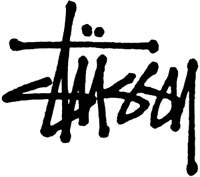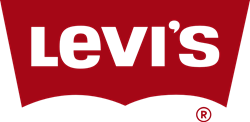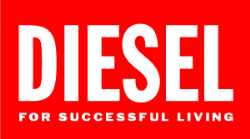Fundamentals of Logo Design Part 2: Typographic Logos
Last week, in the first part of this series on the fundamentals of logo design, we looked at some of the qualities that a good logo should have. When you’re getting started with logo design it can be helpful to think about the categories that logos fall into. These are:
- Typographic
- Type & Symbols
- Symbol Only
Today, we’ll take a look at the first category, typographic logos.
Typographic logos or wordmarks are logos made entirely from type. They suffer from the misconception that they are very quick to throw together and that their design doesn’t require any skill. This is absolutely not the case. A logo designer needs to address questions such as “who is the client” and “who is the target audience.”
While it can seem straightforward to simply use a company or individual’s name on the logo, the typography must be of a high standard or it will look amateurish. Good typography means choosing a suitable typeface (or making a bespoke or proprietary typeface), looking after word spacing and letter spacing. The letterforms should be considered for their shape and legibility. Remember also that a font that may be trendy now can look dated very quickly. Classic typefaces are “classic” for a reason.
An advantage of typographic logos is that the mark is recognizable. There must be hundreds of logos featuring symbols of globes, swooshes and other meaningless shapes but there can be no mistake made when the logo consists of a type treatment of the company name. A disadvantage is that type only logos can look generic if not handled professionally.
Famous Typographic Logos
Here are a few examples of some well-known typographic logos.
Below you can see two logos created using a stylized script typeface. They clearly are two very different types of company with two very different target audiences.
Marks and Spencer and Calvin Klein both use a clean sans-serif typeface.
White text on a red background, anyone ever had a pair of jeans made by either of these companies?
What are your favorite typographic logos?
Frequently Asked Questions (FAQs) about Typographic Logos
What are the key elements to consider when designing a typographic logo?
When designing a typographic logo, it’s crucial to consider the font, color, and size. The font should reflect the personality of your brand and be easy to read. The color should align with your brand’s color scheme and evoke the right emotions. The size of the logo should be appropriate for various applications, from business cards to billboards. It’s also important to consider the balance and spacing between letters, as well as the overall shape of the logo.
How can I make my typographic logo unique?
To make your typographic logo unique, you can experiment with different font styles, weights, and treatments. You can also play with letter spacing, alignment, and case. Incorporating graphic elements or symbols into the text can also add a unique touch. Remember, the key is to create a logo that is distinctive yet still clearly communicates your brand identity.
What are some common mistakes to avoid in typographic logo design?
Some common mistakes in typographic logo design include using too many fonts, colors, or design elements, which can make the logo look cluttered and confusing. Another common mistake is not considering how the logo will look in different sizes and formats. The logo should be scalable and legible in both small and large sizes. Lastly, it’s important to avoid trendy fonts or design elements that may quickly become outdated.
How can I choose the right font for my typographic logo?
Choosing the right font for your typographic logo depends on your brand personality and target audience. For example, a serif font may be suitable for a traditional, professional brand, while a sans-serif font may be better for a modern, minimalist brand. It’s also important to consider the legibility of the font, especially at smaller sizes.
Can I use more than one font in my typographic logo?
While it’s possible to use more than one font in your typographic logo, it’s generally best to stick to one or two fonts to maintain simplicity and readability. If you do choose to use multiple fonts, make sure they complement each other and don’t compete for attention.
How can color enhance my typographic logo?
Color can greatly enhance your typographic logo by adding visual interest and conveying certain emotions or associations. For example, red can convey passion and energy, while blue can convey trust and stability. It’s important to choose colors that align with your brand identity and resonate with your target audience.
How important is the balance and spacing in a typographic logo?
Balance and spacing are crucial in a typographic logo. They affect the legibility and overall aesthetic of the logo. Proper spacing ensures that the logo is easy to read, while balance ensures that the logo is visually pleasing and harmonious.
Can I incorporate graphic elements into my typographic logo?
Yes, incorporating graphic elements into your typographic logo can add a unique touch and enhance the visual appeal of the logo. However, it’s important to ensure that the graphic elements complement the text and don’t overpower it.
How can I test the effectiveness of my typographic logo?
You can test the effectiveness of your typographic logo by getting feedback from your target audience. You can also test how the logo looks in different sizes and formats, and how it looks in black and white versus color.
How can I ensure that my typographic logo is timeless?
To ensure that your typographic logo is timeless, it’s best to avoid trendy fonts or design elements that may quickly become outdated. Instead, opt for classic fonts and simple, clean design elements. It’s also important to ensure that the logo accurately represents your brand and will continue to do so as your brand evolves.
Jennifer Farley is a designer, illustrator and design instructor based in Ireland. She writes about design and illustration on her blog at Laughing Lion Design.









